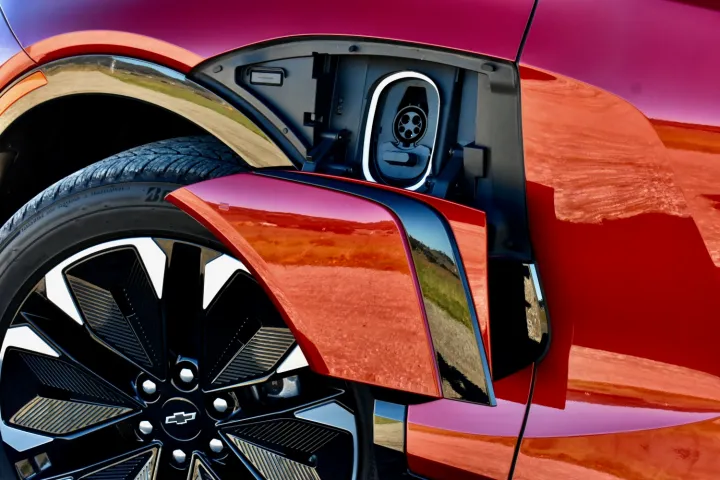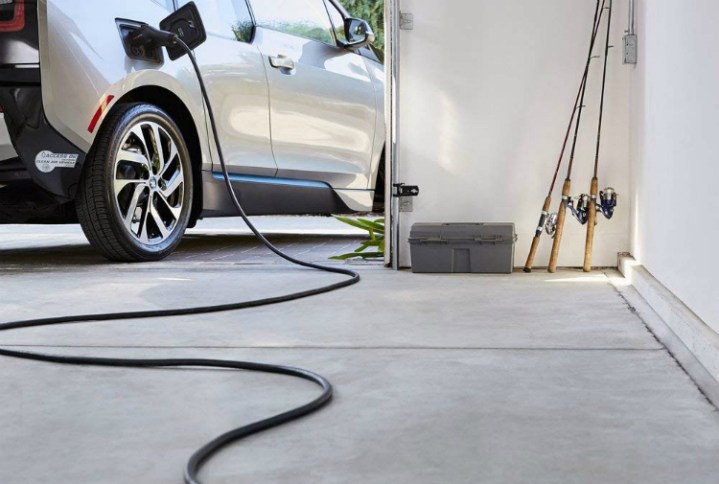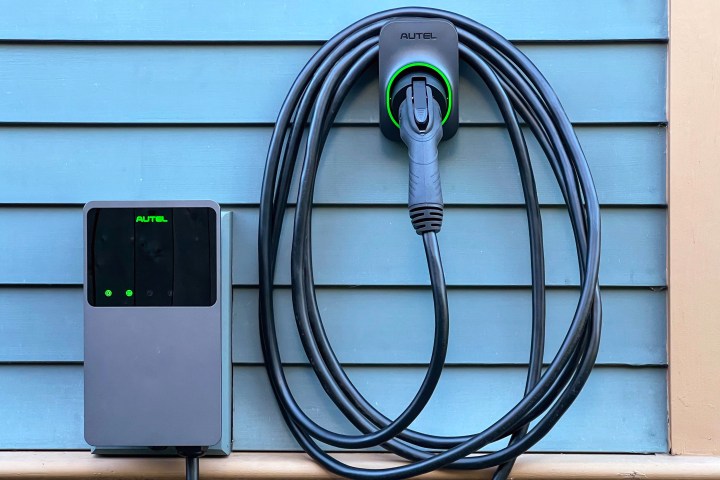It’s commonplace to hear about best practices for ensuring that your EV’s battery remains in top condition for the longest period of time. Chief among those is to only charge your electric vehicle to 80%. Also common, however, is the idea that DC fast charging your EV all the time degrades the battery in a way that can impact range.
That prospect is made even worse by the fact that range is already an issue when it comes to electric vehicles. Range anxiety is one of the biggest downsides of buying an electric vehicle, considering the fact that EVs take longer to refuel and there are far fewer charging stations than there are gas stations. And when you only charge your vehicle to 80%, you’ll only get four-fifths of the range that the manufacturer advertised.
But what if you don’t follow those rules? Not everyone has the luxury of being able to install an EV charger at their home, leaving those who still want an electric vehicle stuck with slow Level 2 public chargers or much faster DC fast chargers. Does using those DC fast chargers all the time really impact the health of your electric car’s battery? Here’s a look.
What is DC fast charging?
The power outlets in your home deliver alternating current (AC) power, largely because it has long been easier to transmit over long distances without significant energy losses. When you plug a charger into a power outlet in your home, you’re delivering AC power to your EV. That’s true of Level 2 charging stations too, which tap into the AC power delivered by the grid.

There’s only one problem. The power that your EV uses is stored as direct current (DC) power. When you plug an AC power source into your vehicle, it has to convert that energy to DC power that it can store and later use. There’s a way around this, though. DC charging stations convert the AC power from the grid to DC power before sending it to your EV, essentially bypassing the onboard power converter in your car and charging the battery directly. This method of charging is usually referred to as level 3 charging or fast charging, and while Level 1 chargers max out at around 1.8 kilowatts and Level 2 chargers at around 20kW, most DC fast chargers can currently charge at up to 350kW, with even faster DC fast charging tech on the way.
Why would DC fast charging degrade my EV’s battery?
So what’s inherently bad about charging faster when it comes to preserving your EV’s battery? Well, inherently nothing, but faster charging can come with some trade-offs. The fact is that DC fast charging generates more heat, which over time can accelerate the degradation of the cells in the battery pack.
“DC fast charging may in some instances shorten an EV’s lifespan,” explained David Michery, CEO of EV manufacturer Mullen Automotive, in an interview with Digital Trends. “As compared with AC charging (levels 1-2), DC fast charging has much higher current and will generate more heat and potentially cause kinetic issues of active materials, which can lead to faster battery degradation.”

That, however, seems to be largely theoretical. There’s no denying that over the very long term, the additional heat generated by DC fast charging would scientifically impact an EV’s battery. EVs have now been on the road for quite a while, and studies seem to suggest that DC fast charging isn’t as bad for your car’s battery as previously thought. That could, however, have more to do with how an EV handles intelligently charging, rather than simply using DC fast charging in general.
According to a study by Recurrent that was conducted on over 6,500 Tesla Model 3s, frequent DC fast charging doesn’t have quite as much of an impact as some have previously assumed. The study tracked Tesla vehicles that DC fast charge often (over 70% of the time), compared to those that DC fast charge rarely (under 30% of the time), noting that the trend of battery degradation is actually very similar. It’s important to note that while Recurrent’s study includes vehicles from between 2012 and 2023, 90% of the vehicles studied were from 2018 or later, and 57% from 2021 or later.

It’s hard to get around science though. As As Dr. Nadim Maluf, CEO at Qnovo and a battery chemistry expert, explains, there are a few different physical impacts on a battery when DC fast charging.
“DC fast charging stresses the battery and causes two primary degradation mechanisms to accelerate: the structural material of the electrodes degrades and lithium metal dendrites form that over time may lead to catastrophic failure,” said Maluf.
However, the extent to which it affects the batteries built into EVs simply isn’t as much as you might assume based on all the online worrying about charging speeds. It’s likely to have less and less of an impact too, as cars get smarter and the computers built into them can better modulate how fast a battery charges to preserve battery health.
What to do if you’re worried about battery degradation
If you think the data on how DC fast charging impacts EVs’ batteries is a bit vague, you’re right. While it’s clear that DC fast charging may not have a massive impact on battery health over time, the minimal impact that it does have over longer periods is a little unclear and likely won’t become clearer until we’ve had EVs on the roads for much longer. So that raises the question — what should you do to ensure that your EV’s battery remains as healthy as possible for as long as possible?
The good news is that there are plenty of things you can do to preserve the battery inside your EV. The bad news is that those things vary quite a bit depending on a variety of factors. According to Maluf, there are three main factors that can impact battery health: charging speed, maximum state of charging, and temperature.

“Hot is bad (above 95 degrees Fahrenheit). Very cold is also bad (below freezing). The battery is happiest between 60 degrees F and 90 degrees F,” said Maluf. “Use your best judgment in optimizing among these three factors. On a hot day, don’t charge to 80% or higher, as this can strain the battery. If you’re planning a long-distance road trip, charge your vehicle to 90% or even 100% the night before when it’s cooler using a Level 2 charger (for slower charging). This will ensure you have the maximum range for your journey.”
That might seem like a lot. If it’s very cold, limit charging. If it’s very hot, limit charging. If you’re DC fast charging, limit charging. If you’re not road-tripping, limit charging.
All of this, however, can be boiled down to basics. If you can, charge at home using Level 1 or Level 2 charging speeds, and set your car’s limit to 80% in day-to-day life, or charge to full if you’re about to go on a road trip. And, use your best judgment around temperature. Know that very cold and very hot temperatures are bad for batteries — but unless you frequently charge in very cold or very hot temperatures, don’t worry too much about it. After all, you have places to be.
Thankfully, the experts agree that drivers shouldn’t have to be constantly worried about how and when they charge their car. “From time to time, charging to 100% is completely fine across charge speeds of 1-3,” said Michery. “Overall, the goal is to strike a balance with daily charging and vehicle drive range, which in turn will benefit the ongoing battery health and extend overall battery life.

The bad news is that no matter what you do, your EV’s battery is going to degrade over time. That’s just science, and it’s impossible to get around with the current state of battery technology If you hold on to an electric vehicle for years and years, expect the range to diminish a little.
The future of battery and charging tech
EV manufacturers are incentivized to be working on all of this. After all, they know that range anxiety is a big factor in the buying decision of many customers, and really, they just want to sell more cars. In the short term, companies are likely to implement smarter systems that can better manage the amount of power being delivered to the battery to preserve the health of that battery, even if this does come at the cost of a slightly reduced charging speed.
In the long term, however, issues around charging speeds might completely go away. Why? Solid-state batteries. Solid-state batteries are set to start rolling out to electric vehicles in the near future, and testing data seems to indicate that they’re much more resilient than the lithium-ion batteries currently used in EVs — not to mention the fact that their longer range means that the degradation that does occur wont be quite as impactful.
In the meantime, stick to Level 1 and Level 2 when possible, for the sake of being careful. But know that DC fast charging isn’t as bad as some might have you believe, and you don’t necessarily have to bend over backwards to ensure you’re always charging at slower speeds, in fear of your car’s range dramatically decreasing.




